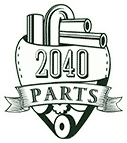Power Steering Pump 97-00 01 02 03 04 05 Chevy Venture on 2040-parts.com
Carnesville, Georgia, US
Power Steering Pumps & Parts for Sale
 90 91 acura integra oem high pressure power steering hose with sensor(US $49.95)
90 91 acura integra oem high pressure power steering hose with sensor(US $49.95) Power steering pump 04 05 06 07 08 09 10 nissan titan (US $57.75)
Power steering pump 04 05 06 07 08 09 10 nissan titan (US $57.75) Power steering pump 04 05 06 07 highlander (US $75.00)
Power steering pump 04 05 06 07 highlander (US $75.00) 98 99 00 01 02 03 04 05 06 ford ranger power steering pump 3.0l(US $40.00)
98 99 00 01 02 03 04 05 06 ford ranger power steering pump 3.0l(US $40.00) Power steering pump 04 05 06 toyota sienna (US $52.50)
Power steering pump 04 05 06 toyota sienna (US $52.50) Power steering pump 98 99 00 01 02 03 04 05 passat (US $50.25)
Power steering pump 98 99 00 01 02 03 04 05 passat (US $50.25)
This could be your first autonomous vehicle
Thu, 09 Jan 2014While Google's autonomous fleet of robot cars prowls Silicon Valley and gets all the press, the first, or one of the first, truly autonomous vehicles you may ride in could be something like this: The humble, people-moving Navia. Developed by a French company called Induct, the Navia is ringed with laser beams (not frickin' laser beams. Ed.) that help it navigate through city streets or college campuses without the aid of a track in the ground, a rail or even GPS (GPS is not accurate enough, Induct says).
Aston Martin Virage (2011) at 2011 Geneva motor show
Wed, 23 Feb 2011This is the new Aston Martin Virage, a V12-engined GT to sit halfway between the DB9 and the DBS. It will be officially unveiled to the public, along with the Aston Martin Vantage S, at the 2011 Geneva motor show next week. Numbers are easy to understand, so let’s start with the figures produced by the 6.0-litre V12 shared between the trio: the DB9 has 470bhp and 442lb ft, the DBS 510bhp and 420lb ft, and the Virage sits neatly between the two with 490bhp and 420lb ft.
Google Car (self) drives into the future [w/video]
Wed, 28 May 2014After years of speculation, Google finally announced its Google Car autonomous vehicle at the Recode Code Conference in Palos Verdes, CA yesterday. Google CEO Sergey Brin unveiled the company's new two-seat, driverless vehicle at the software conference, underlining the company's aim of drastically reducing road deaths and injuries caused by human error, particularly by distracted drivers. "We're now exploring what fully self-driving vehicles would look like by building some prototypes; they'll be designed to operate safely and autonomously without requiring human intervention," said Brin.

